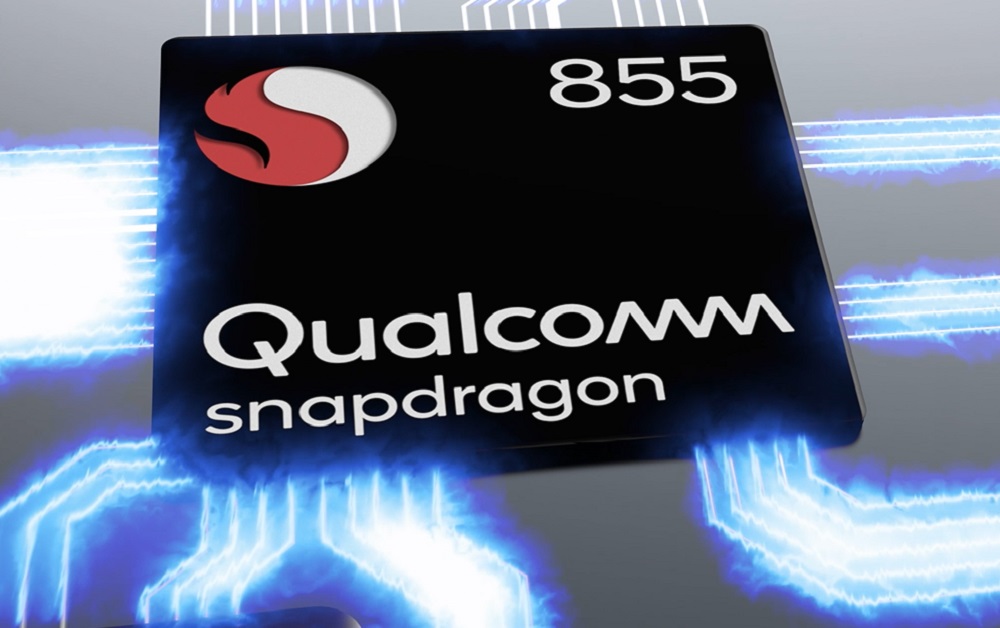iPhone Who? Snapdragon 855 Could Be Faster Than Apple's A12 CPU
At the Snapdragon Tech Summit 2018, Qualcomm announced the company’s first 7nm mobile processor, the Snapdragon 855. The company touts huge performance increases that could even allow it to overtake the Apple A12 Bionic.. Qualcomm also announced support for 5G in multiple countries coming next year.
Snapdragon 855
As the Snapdragon 855 will be manufactured on a 7nm process node, just like Apple’s A12 Bionic and Huawei’s Kirin 980, the chip will benefit from significant improvements in performance and energy efficiency.
Together with a new Kryo CPU core (likely based on Cortex-A76), the chip is expected to see an increase in performance of 45% over the CPU found in the Snapdragon 845. Apple’s A12 Bionic can achieve a score of 11,515 on Geekbench 4 benchmark, while the best performing Snapdragon 845-powered Android device, the HTC U12+, can achieve a score of over 9,000 (9,014, to be exact). If you apply Qualcomm's 45 percent number, the Geekbench 4 score on the 855 would go to 13,070.
That means the A12 Bionic is roughly 28% faster than the Snapdragon 845. Therefore, in theory, the Snapdragon 855 could be quite a bit faster than the A12 Bionic, but that remains to be seen when devices with it ship in the first half of 2019.
The GPU promises a performance boost of 20% over Qualcomm’s current offering, too, while also receiving new features such as support for Vulkan 1.1 support, HDR10+ (a first for mobile), and physically-based rendering, all of which should contribute to more realistic-looking games, according to Qualcomm.
The Snapdragon 855 mobile platform also gains a new Hexagon 690 processor with twice as many vector cores as the previous Hexagon 685 processor found in the Snapdragon 845, as well as a redesigned Hexagon Tensor Accelerator that helps the new Snapdragon 855 chip achieve 3x machine learning performance over the Snapdragon 855.
It’s not yet clear if this is sufficient to beat Google, Huawei, and Apple’s latest ML accelerators, as Qualcomm’s Hexagon processor used to be quite behind in terms of ML performance not too long ago. However, the ML performance of the new Hexagon ML accelerator should be within the same ballpark as the others.
Get Tom's Hardware's best news and in-depth reviews, straight to your inbox.
Devices with Snapdragon 855 should also see a significant improvement in computational photography thanks to the new Spectra 380 image signal processor (ISP), which will include computer vision capabilities. The new ISP will be four times more efficient than its predecessor.
Other features for the Snapdragon 855 mobile platform include the company’s latest generation of “3D Sonic Sensor,” which would allow smartphone and notebook makers to embedded fingerprint sensors beneath the devices’ screens, freeing manufacturers to also create devices with “edge-to-edge” screens (at least those which have been unwilling to put the fingerprint readers on the back of smartphones). As it uses ultrasonic technology to unlock the devices, the 3D Sonic Sensor will work with wet fingers, which is not possible with existing fingerprint readers.
The new mobile platform comes with a new HEVC and VP9 codec decoder that is seven times more efficient, and Qualcomm claims this means you won’t need to look for the charging cable while watching movies on Snapdragon 855-powered devices in the future.
The new chip also supports VR games at 8k resolutions and 120 frames per second, which should enable much more immersive mobile virtual reality experiences.
5G Devices Coming Next Year
Earlier this year, Qualcomm announced the world’s first 5G modem, the X50, which is supposed to increase download speeds by up to 20x over what most mobile users currently experience. However, it seems like this modem may not be integrated into the Snapdragon 855 mobile platform. It will come as a separated modem that manufacturers will have to buy and integrate into their devices. The Snapdragon 855 platform will come with a Cat-20 4G modem offering up to 2Gbps download speeds, called the X24.
Samsung, LG, Verizon, AT&T, and Sprint have all promised to sell 5G smartphones in 2019, all of which will likely use Qualcomm’s X50 modem (at least in the U.S.). Although Intel promised to ship its own 5G modem in 2019, Apple is expected to launch devices with 5G modems only in 2020. Apple has had a rough relationship with Qualcomm lately, so it looks like the company now depends on Intel’s own roadmap to deliver new advances in wireless technology to its customers.
Lucian Armasu is a Contributing Writer for Tom's Hardware US. He covers software news and the issues surrounding privacy and security.

